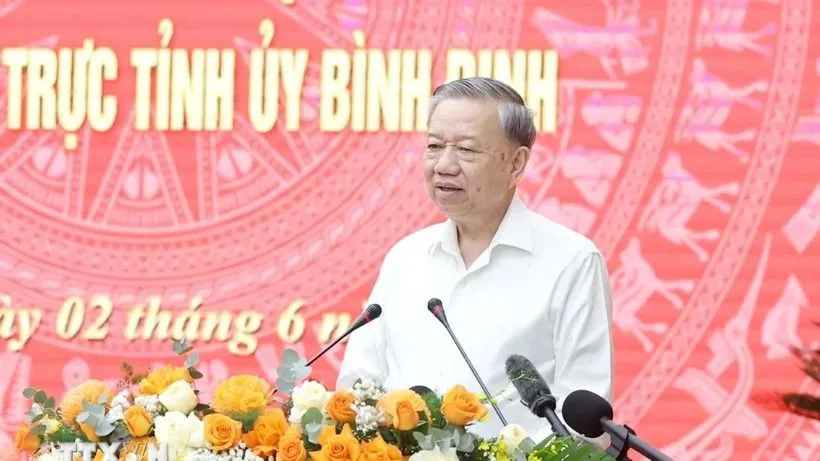
On the morning of June 2, in Gia Lai, General Secretary To Lam and the Central Working Delegation worked with the Standing Committee of Gia Lai Provincial Party Committee and the Standing Committee of Binh Dinh Provincial Party Committee on the implementation of resolutions and conclusions of the Central Committee, the arrangement of local apparatus, national defense and security work, leadership in implementing economic growth tasks, and social security work in the locality.
Attending the event were Politburo members, Party Central Committee Secretaries: Head of the Central Organization Committee Le Minh Hung, Chairman of the Central Inspection Committee Nguyen Duy Ngoc, Chairman of the Central Committee of the Vietnam Fatherland Front Do Van Chien; Politburo member, Director of the Ho Chi Minh National Academy, Chairman of the Central Theoretical Council Nguyen Xuan Thang; Party Central Committee Secretary, Head of the Party Central Committee Office Le Hoai Trung; Party Central Committee member, Deputy Prime Minister Le Thanh Long; leaders of central departments, ministries, branches, leaders of Gia Lai and Binh Dinh provinces...
Strictly implement the resolutions, directives and conclusions of the Central Committee.
At the working session, representatives of the Standing Committee of Gia Lai Provincial Party Committee and Binh Dinh Provincial Party Committee reported on the situation and results of implementing the Resolution of the 11th Conference of the 13th Party Central Committee.
In Gia Lai, the organization of conferences to study and disseminate the implementation of the Central Committee's resolutions, directives and conclusions to cadres and party members is ensured to be serious, timely and in accordance with regulations.
The concretization and implementation are carried out urgently, synchronously, focusing on closely following the goals, targets, tasks, and solutions to build action programs and implementation plans suitable to the practical situation of the province, creating high consensus and unity in the leadership and implementation process.
Socio-economic development has taken steps, it is estimated that in the 2020-2025 term, the economic growth rate is estimated to increase by an average of 6.36% per year.
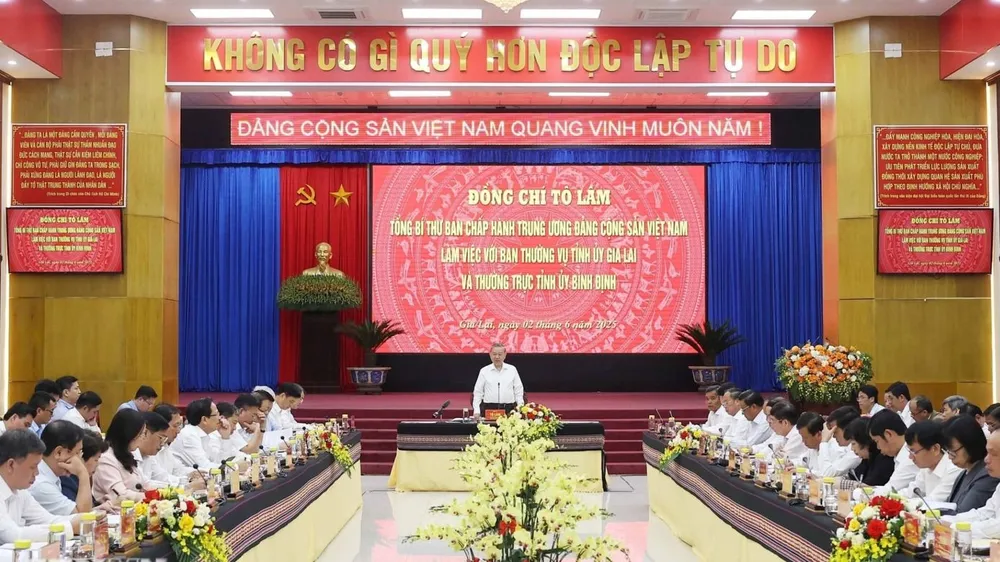
The rate of schools meeting national standards is estimated to reach 71.84% by the end of 2025. The total number of communes, wards and towns meeting national health criteria is estimated to reach over 95% by the end of 2025.
The program to eliminate temporary and dilapidated houses has been implemented vigorously and effectively, with 4/17 localities having completed and handed over houses to the people. The economic structure has shifted in the right direction. Political security has been maintained; social order and safety have been ensured.
The work of inspection, supervision and enforcement of party discipline is carried out strictly, in accordance with procedures and regulations, and quality is improved.
The arrangement and consolidation of Party committees, agencies and units in the political system are carried out drastically and synchronously from the province to the grassroots level. The preparation for organizing Party congresses at all levels is carefully, closely and scientifically led and implemented, in accordance with regulations and suitable to the characteristics and actual situation of Party committees, units and localities.
Gia Lai province proposes to study specific mechanisms and policies to ensure national defense and security in the strategic Central Highlands region; continue to pay attention to socio-economic development, improve people's lives, especially in ethnic minority areas; pay attention to training, fostering, arranging and using ethnic minority cadres with qualifications, capacity and dedication to work.
Research and issue specific mechanisms and policies to support cadres, civil servants, public employees, and workers in terms of travel and housing expenses, in order to unify among provinces subject to arrangement and merger so that cadres, civil servants, public employees, and workers can work with peace of mind when merging provinces.
In Binh Dinh, the implementation of the Central Government's policy on reorganizing the administrative apparatus in association with the 2-level local government organization model; developing personnel plans for the provincial Party Committee after the reorganization and the newly established commune level were thoroughly discussed and reached high consensus by the Standing Committees of the Provincial Party Committees of Binh Dinh and Gia Lai provinces.
Party committees, party organizations and the entire political system of Binh Dinh province must carry out urgent, comprehensive, strict, cautious, democratic and objective measures, ensuring progress, timeliness and compliance with the Central's policy in the spirit of "running and lining up at the same time".
Regarding the implementation of the targets of the Resolution of the 20th Provincial Party Congress, term 2020-2025, the average local product growth rate in 5 years is estimated to reach 7-7.2%.
The urbanization rate by the end of 2025 is estimated to reach 53% to 55%, with 97/113 communes in the province meeting new rural standards. The poverty rate by the end of 2025 is 0.62%. Maintain 100% of the rural population using clean water.
As of May 2025, Binh Dinh province has completed the construction, repair and upgrading of houses for 4,411 households, reaching 100% of the set plan, 7 months ahead of schedule compared to the direction of the Prime Minister.
Binh Dinh Province proposed that in order to create conditions for the new Gia Lai province to develop dramatically, with an average annual double-digit growth in the period of 2025-2030, there should be a mechanism to support resources to complete the transport and irrigation infrastructure system of the new Gia Lai province; consider the deadline for commune-level administrative units and provincial-level administrative units (after rearrangement) to officially come into operation at the same time to create conditions for local governments at 2 levels to operate synchronously and stably, especially creating favorable conditions in the implementation of public services for people and businesses; consider decentralization and delegation of power to localities to proactively continue to arrange and use cadres who are not old enough to be re-elected (according to Directive No. 45-CT/TW dated April 14, 2025 of the Politburo, they must retire) but are still healthy, have work experience, have qualifications, capacity, enthusiasm and have the desire to continue to contribute so as not to waste quality human resources.

Rising to become a key growth pole
In his concluding remarks at the meeting, General Secretary To Lam emphasized that the meeting with the Standing Committee of Gia Lai Provincial Party Committee and the Standing Committee of Binh Dinh Provincial Party Committee was a continuation of consistent instructions to open a new development stage for both localities, especially in the context of preparing to merge Gia Lai and Binh Dinh provinces into a stronger, more modern and effective administrative-economic unit.
The General Secretary requested that Party committees, authorities, political systems and cadres of the two localities fully recognize and maximize the similarities and strategic complementarities between Gia Lai and Binh Dinh, considering them an important premise for shaping the province's development vision after the merger.
The General Secretary suggested that the two localities have many similarities in culture and history: being the cradle of the Tay Son movement, both are lands of revolutionary tradition, imbued with the spirit of self-reliance, self-improvement, loyalty and aspiration to rise up.
In terms of geography and regional connectivity, the connection between the highlands and the coast via National Highway 19 and the Quy Nhon - Pleiku Expressway will form an East - West economic corridor capable of creating a breakthrough in logistics, transportation, trade and regional connectivity. In terms of economy, this is a strategic complement.
The merger will form a closed, efficient value chain, from production to processing, distribution and export, serving the strategy of green, sustainable and integrated development.
Regarding tourism, Gia Lai possesses a forest ecosystem, great culture, and gong heritage, while Binh Dinh has Tay Son relics, beautiful coastline, and a rich system of traditional craft villages and arts.
The merger will create conditions for the development of unique inter-regional tourism routes, enhancing the competitiveness and brand of regional tourism on the national tourism map.
Regarding human resources and management models, Gia Lai has a young and abundant labor force; Binh Dinh has a vocational training system and universities. The new province needs to exploit these dual strengths to build a team of professional cadres, a modern government, and an effective, efficient, and effective public service to meet the requirements of rapid, sustainable, and comprehensive development.
The General Secretary noted that Gia Lai and Binh Dinh still face many difficulties and challenges such as: low growth rate compared to potential; lack of large-scale projects; poor transport and irrigation infrastructure; small number of small-scale enterprises with limited competitiveness; lack of high-quality human resources for high-tech and innovative industries; difficult business environment with many barriers.
Therefore, the merger of Gia Lai and Binh Dinh into a new administrative-economic entity is not only large in scale, but also strong in competitiveness, capable of deep integration into the national and global value chain.
With a streamlined, dynamic, modern two-tier local government model, with an administrative apparatus that is "Slim - Lean - Strong - Efficient - Effective - Effective", the General Secretary suggested that the two provinces of Gia Lai and Binh Dinh combine their wisdom to think about a new Gia Lai, proactively building a long-term development vision, establishing strategic breakthroughs in governance, infrastructure, science and technology and human resources, maximizing the complementary points between the two localities so that the province can rise to become an important growth pole of the Central - Central region and contribute to bringing the country to a strong breakthrough in the new development stage.
The new Gia Lai province must focus on building a development model that is balanced, integrated, capable of regional linkage and comprehensive connectivity.
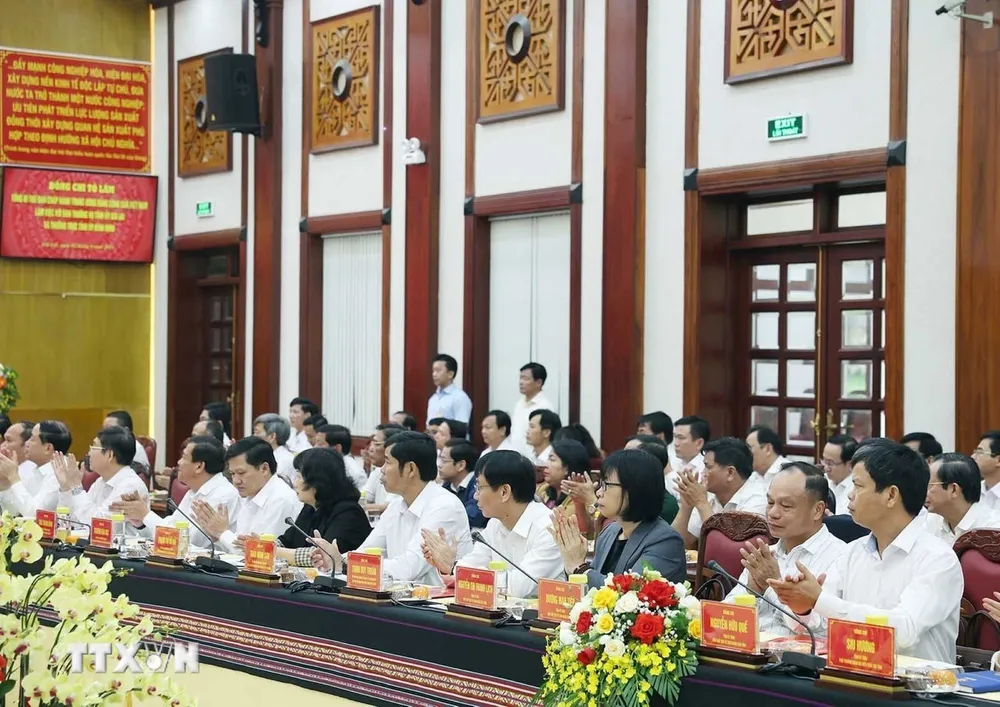
One of the strategic priorities that needs to be broken through is the development of inter-regional infrastructure and modern logistics services. In addition, tourism must be considered an economic sector with potential for breakthroughs, and it is necessary to develop a unique tourism ecosystem, connecting sea - forest - heritage, exploiting the cultural values of gongs, Tay Son, folk arts, traditional festivals, associated with ecological resorts and community tourism.
New Gia Lai tourism is not developed in a mass way but is developed in depth, with identity, bringing tourists rich, unique and different experiences.
Satellite cities need to be developed in sync with industrial parks, logistics, tourism and service centers. Urban government must be digitalized, the governance model must be modern, transparent, and operate effectively, ensuring fast, close and friendly interaction with people and businesses.
The new Gia Lai province needs to establish and organize the implementation of three strategic breakthroughs that are fundamental and lead the entire development process in the new period: Breakthrough in development institutions, shifting from "management" to "creation" and "service"; breakthrough in connecting infrastructure - building a material foundation for rapid and sustainable growth; breakthrough in human resources.
In the development journey in the coming period, the General Secretary pointed out that the new Gia Lai province needs to deeply understand the important thematic resolutions of the new Politburo. This is the institutional foundation of a creative and guiding nature, helping the locality to open up its potential, clear bottlenecks and create momentum for a systematic and sustainable breakthrough. He requested that the Standing Committee of the Provincial Party Committee, People's Council, and People's Committee of Gia Lai and Binh Dinh provinces at present and the new Gia Lai province urgently concretize these contents into a synchronous and comprehensive action program, bringing the resolutions to life.
The General Secretary noted that with the second largest area in the country, Gia Lai must proactively grasp the area, ensure political stability, social order and security, and border sovereignty.
At the same time, the province needs to promote the cultural identity of ethnic groups, care for the lives of people, especially in remote areas, and ethnic minority areas. The province must become a place where each person can feel concrete progress in their daily lives, where change does not only take place on paper or slogans, but is demonstrated through a government that understands the people, acts for the people, and takes the satisfaction and happiness of the people as the highest measure for all decisions.
In the process of organizing the apparatus, it is necessary to retain talented people, arrange personnel in harmony with regions, ethnicities, and genders; create a culture of public service, taking the effectiveness of serving the people as a measure.
Every cadre and party member, especially the leader, must dare to think, dare to do, dare to take responsibility, and become the center of spreading innovation in the political and social system. The new Gia Lai Provincial Party Congress must truly be the opening step for a new development journey.
The new Gia Lai province must not be satisfied with what it has, and even more so, must not let development opportunities fall into formality. On the contrary, it must turn challenges into motivation, pressure into action, and the Party's correct policies into concrete, practical, and sustainable results. With its great potential, glorious revolutionary tradition, rich cultural identity, and especially the spirit of solidarity, innovation, and aspiration to rise up, the General Secretary believes that the new Gia Lai province will have enough intelligence, courage, and aspiration to become a model of dynamic, modern, and truly people-oriented development.
Source: https://www.sggp.org.vn/tong-bi-thu-to-lam-dua-tinh-gia-lai-moi-tro-thanh-cuc-tang-truong-quan-trong-o-trung-trung-bo-post797814.html








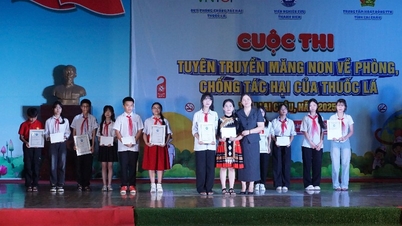



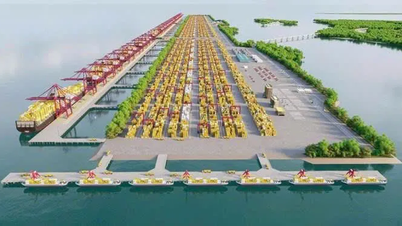
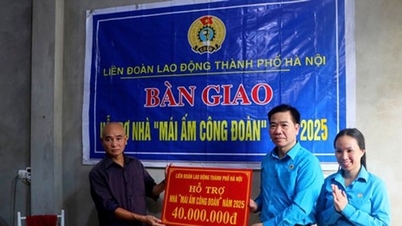


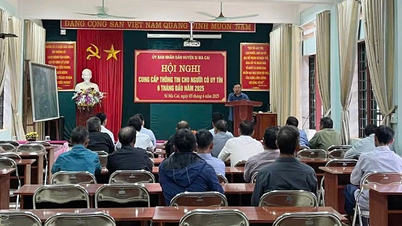





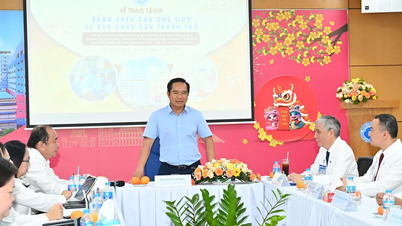
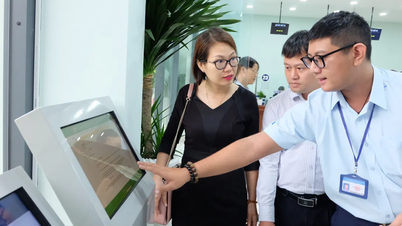
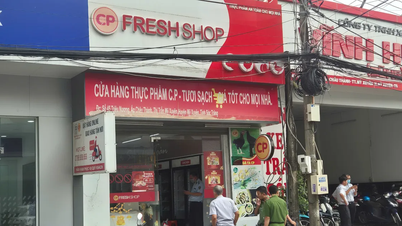

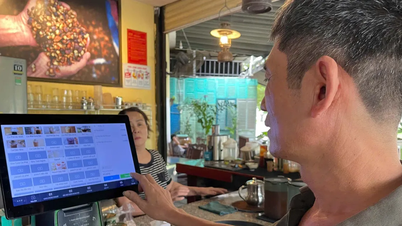






































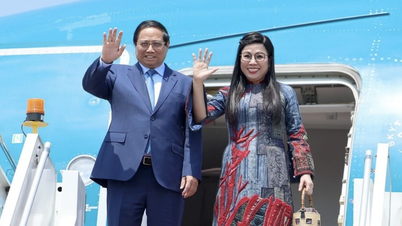
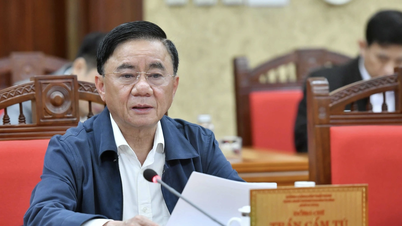





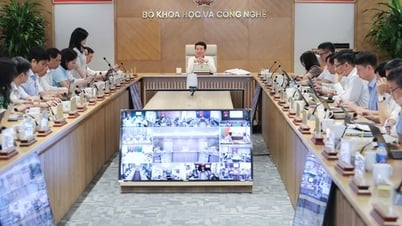
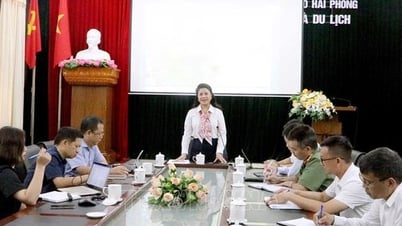



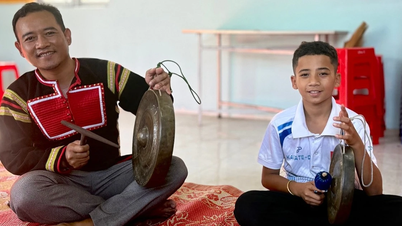



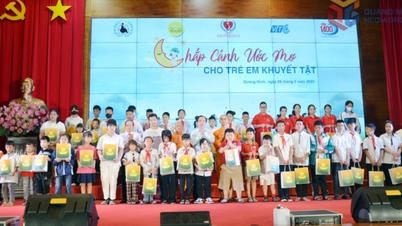



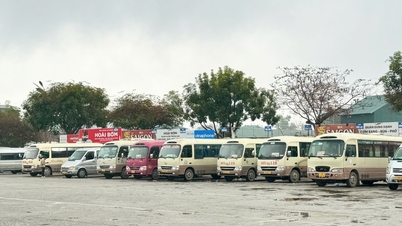










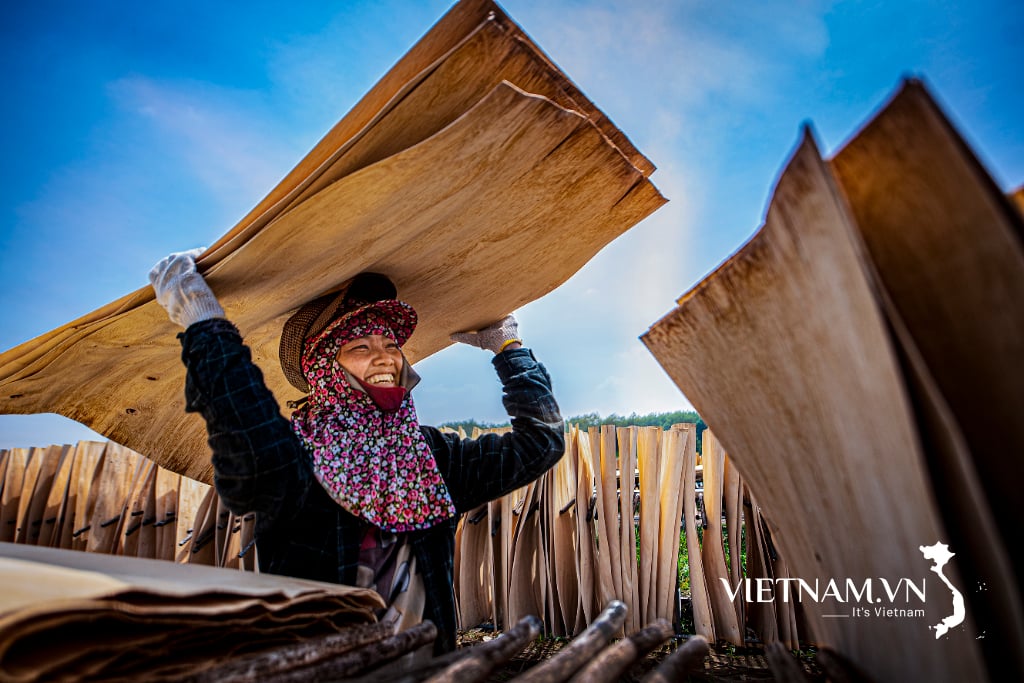
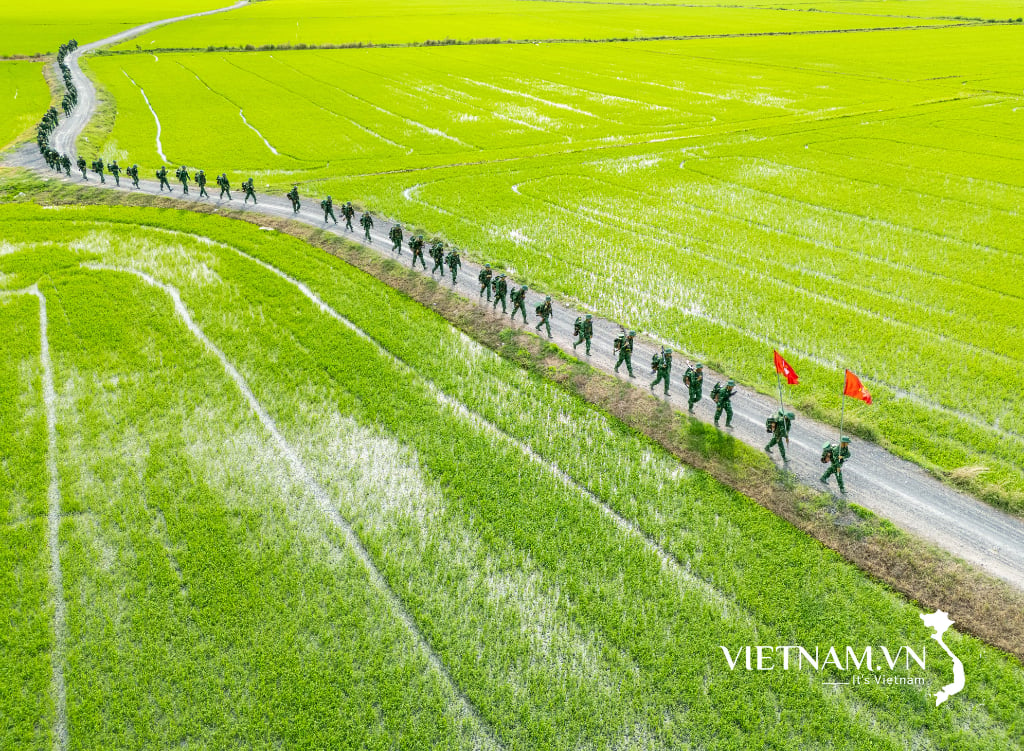
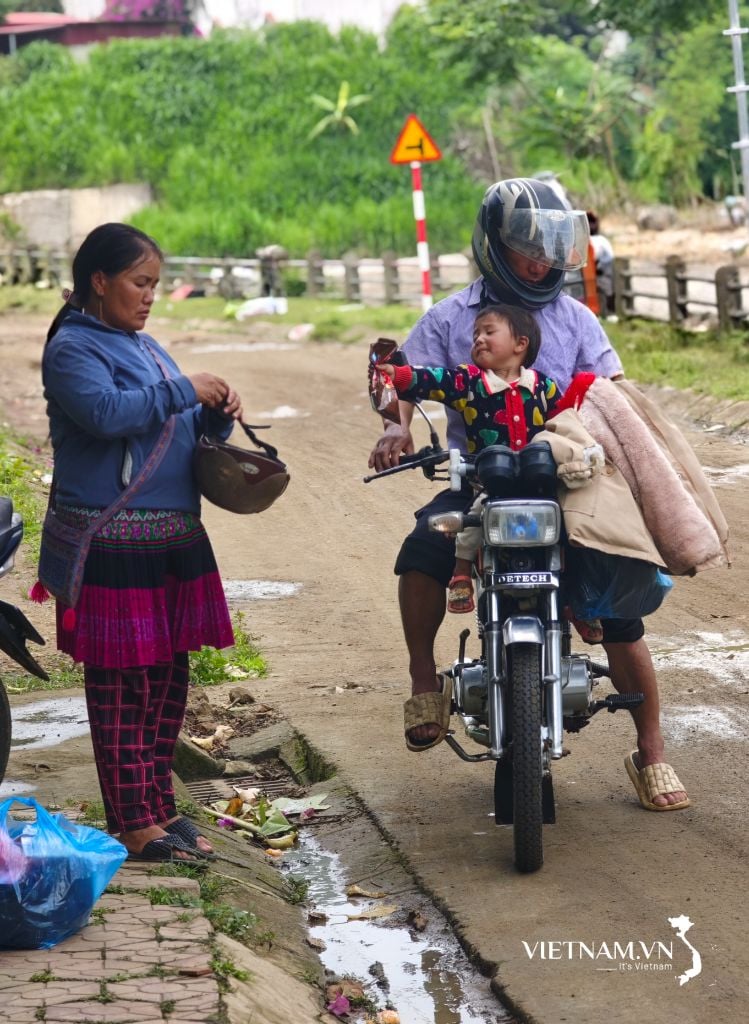
Comment (0)